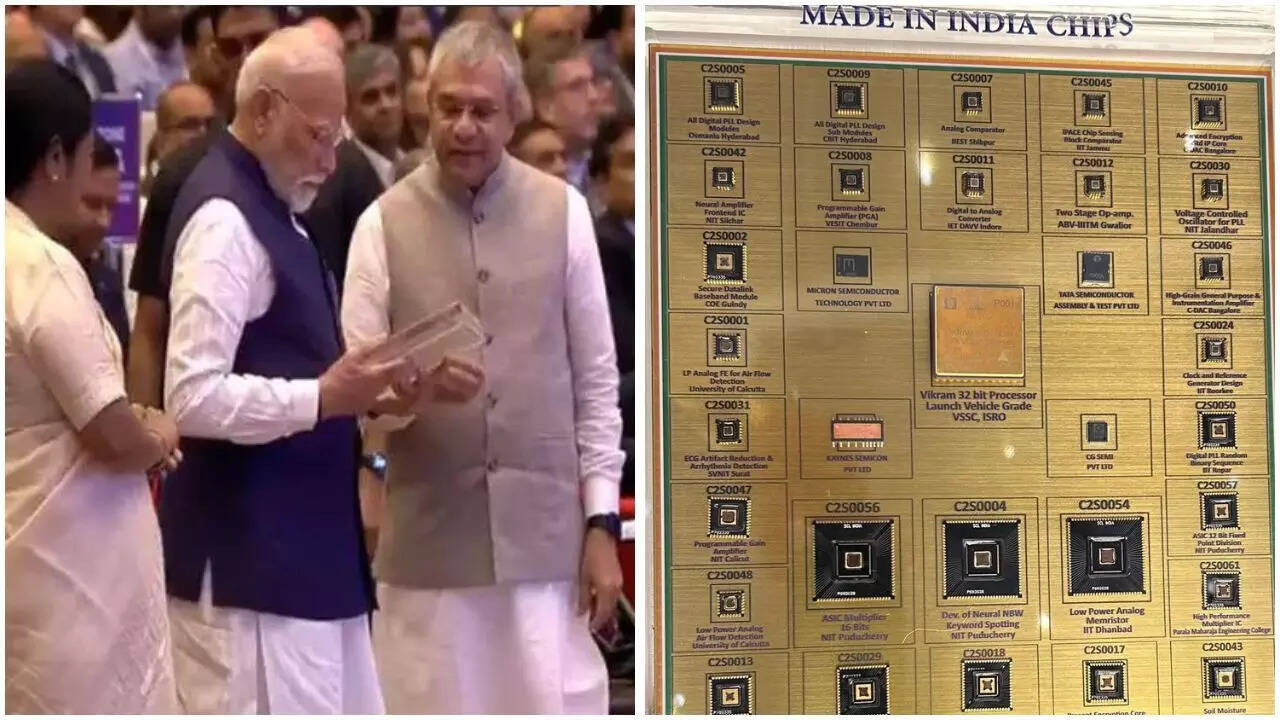Union IT minister Ashwini Vaishnaw presented the first ‘Made in India’ chip, the Vikram 32-bit processor, to Prime Minister Modi at Semicon India 2025. Vaishnaw hailed it as a turning point, noting the rapid construction of five semiconductor units.
India’s Semiconductor Moment: The Vikram-32 Processor Arrives
For years, whispers of India becoming a significant player in the global semiconductor industry have echoed through tech circles. Now, those whispers are turning into a tangible roar. The recent unveiling of the Vikram-32, India’s first indigenous 32-bit microprocessor, isn’t just a technological milestone; it’s a statement of intent, a bold step towards self-reliance, and a potential game-changer for the nation’s economic future.
This isn’t about simply creating another processor. It’s about establishing a domestic ecosystem, fostering innovation, and reducing dependence on foreign entities for critical components. This newfound capability promises to reshape various sectors, from consumer electronics to strategic defense applications.
What Makes the Vikram-32 So Special?
The Vikram-32 processor represents a culmination of years of research and development efforts by the Centre for Development of Advanced Computing (C-DAC). What distinguishes this chip is that it has been conceived, designed, and manufactured entirely within India. This end-to-end indigenous approach is crucial for ensuring security, customization, and long-term sustainability.
But what exactly does this processor bring to the table? The Vikram-32 is designed to power a wide array of devices, including smart meters, IoT devices, and even systems within the automotive and industrial sectors. Its low-power consumption makes it particularly suitable for battery-operated devices, contributing to energy efficiency and environmental sustainability. Furthermore, the processor’s architecture allows for customization, making it adaptable to specific application requirements.
Beyond the Chip: Building an Ecosystem
The creation of the Vikram-32 goes beyond just designing silicon. It’s about nurturing a complete ecosystem. This includes developing local expertise in chip design, fabrication, and testing. It also necessitates building a robust supply chain, encouraging private sector participation, and fostering collaboration between academia and industry.

Think of it like building a house. You can’t just have the bricks; you need the architects, the construction workers, the plumbers, and the electricians to bring it all together. Similarly, for India to truly capitalize on its semiconductor ambitions, a complete ecosystem needs to be in place. This processor is only one step.
The Geopolitical Significance of India’s First Processor
In an increasingly interconnected and yet politically fragmented world, control over critical technologies like semiconductors is a strategic imperative. Dependence on foreign suppliers can create vulnerabilities, making a nation susceptible to disruptions in supply chains or even political pressure. The development of the Vikram-32 significantly reduces this dependence, enhancing India’s strategic autonomy.
Imagine a scenario where access to specific components is restricted due to geopolitical tensions. With a domestic chip manufacturing capability, India can insulate itself from such risks, ensuring the smooth functioning of its critical infrastructure and defense systems. This is not just about economic gains; it’s about national security.
Challenges and the Road Ahead
The journey to becoming a semiconductor powerhouse is not without its challenges. Building a competitive chip manufacturing industry requires significant investments in infrastructure, technology, and skilled manpower. Furthermore, India needs to compete with established players in the global market, many of whom have decades of experience and significant resources.
However, the potential rewards are immense. A thriving semiconductor industry can create high-skilled jobs, boost innovation, and generate substantial revenue for the Indian economy. The Vikram-32 is not the destination, but the launchpad. It is the beginning of a new chapter in India’s technological journey.
To truly unlock this potential, continued government support, strategic partnerships, and a focus on research and development will be essential. Furthermore, encouraging private sector investment and fostering a culture of innovation will be crucial for sustaining long-term growth.
The Vikram-32 processor marks a pivotal moment for India. It’s a testament to the nation’s technological prowess and a symbol of its ambition to become a global leader in the semiconductor industry. While challenges remain, the momentum is building. India’s semiconductor dream is no longer just a vision; it’s becoming a reality. Learn more about India’s tech advancements and their global impact on our main technology page.







